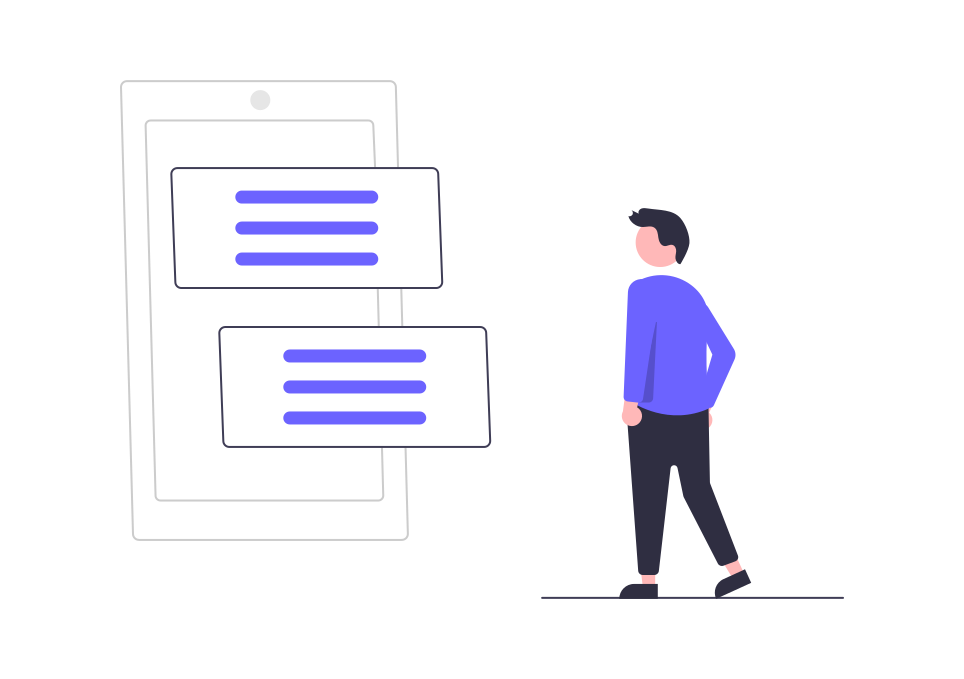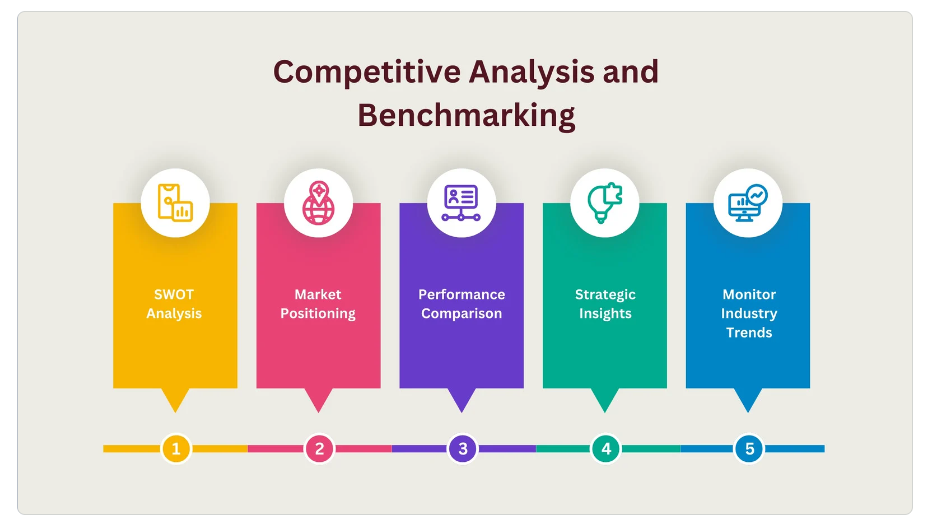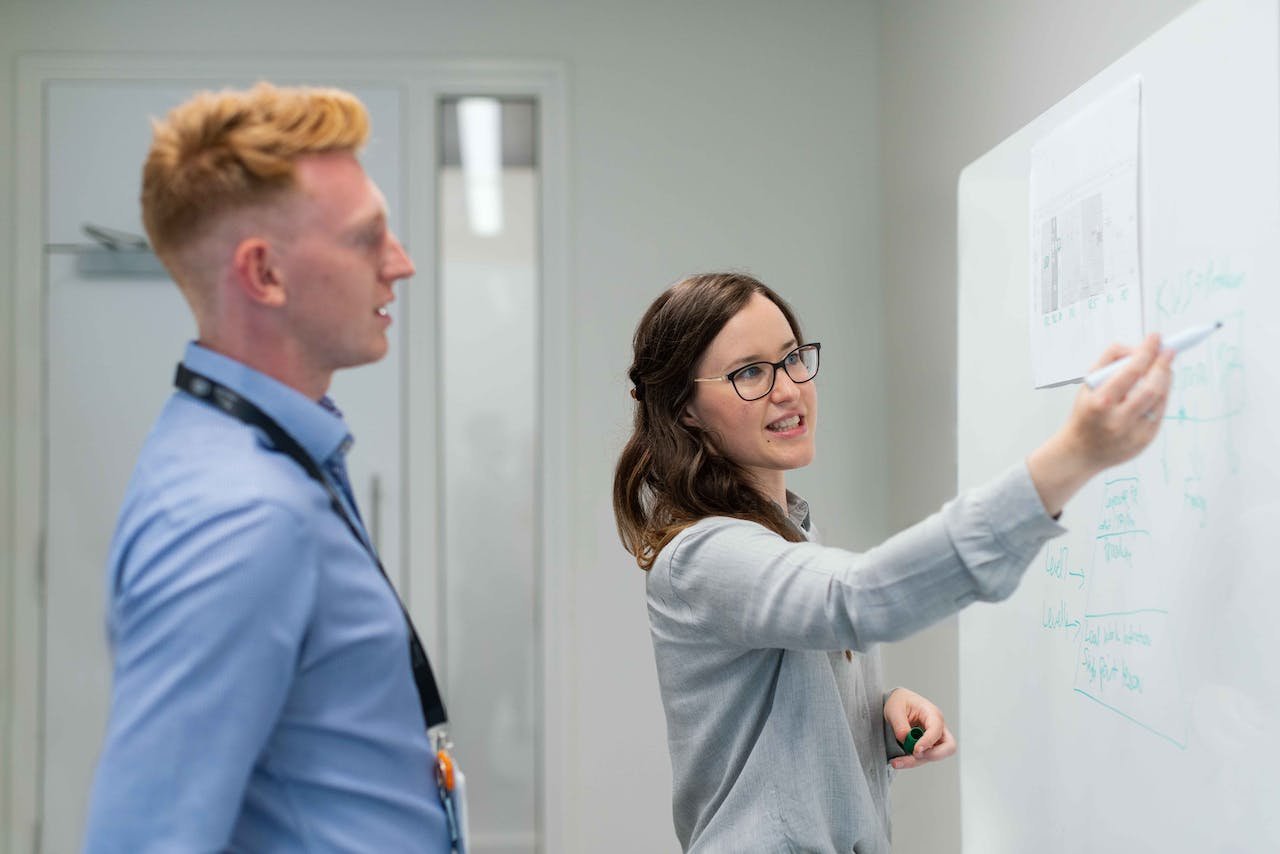Requirements gathering is a critical process in any project or product development lifecycle. As a business analyst, having a strong grasp of the various requirements elicitation techniques at your disposal is key to delivering solutions that truly meet stakeholder needs.
In this comprehensive guide, we’ll explore the top 10 requirements-gathering techniques that every business analyst should have in their toolkit, including when and how to use each one most effectively.
Introduction
Requirements gathering also referred to as requirements elicitation or discovery, is the process of understanding stakeholder expectations for a product or solution. The requirements gathered during this process directly inform the features, functionality, and constraints that need to be built by software developers, UI/UX designers, and other implementation teams.
Some common goals and benefits of requirements gathering include:
- Defining business objectives – What is the solution intended to achieve from the customer/user and business perspectives?
- Informing decision-making – Requirements provide the context needed for leadership and delivery teams to make good product choices.
- Scoping work – Requirements form the foundation for estimating the level of effort, cost, and resources required.
- Meeting user needs – Well-gathered requirements lead to solutions that meet functional needs and provide good user experiences.
- Minimizing waste – A solid upfront understanding of requirements reduces misalignments that lead to unnecessary rework.
The requirements-gathering techniques covered in this post are:
- Interviews
- Focus Groups
- Observation
- Document Analysis
- User Stories/Use Cases
- Surveys
- Journey Mapping
- Benchmarking
- Prototyping
- Workshops
These techniques can be used individually or combined as part of an overall requirements-gathering strategy. The right approach depends greatly on the project, complexity, timeline, and types of stakeholders involved. Business analysts need to remain flexible and utilize different techniques to best fit each unique situation.
Now, let’s explore each of these techniques in more detail.
1. Interviews

Conducting stakeholder interviews is one of the most common and effective requirements-gathering techniques. Interviews involve having in-depth, one-on-one conversations to pick stakeholders’ brains through a structured or unstructured questioning process.
Benefits of interviews include:
- Allows tailored conversations to understand perspective/needs deeply
- Flexibility to explore specific areas in real-time based on responses
- Builds rapport and gets stakeholder buy-in through personal contact
Tips for getting the most out of interviews:
- Determine your target interviewees – Map out all groups/roles with valuable perspectives. Prioritize essential stakeholders.
- Develop an interview guide – Outline key questions aligned to business/project objectives.
- Take organized notes – Record responses in a consistent format to uncover themes.
- Prepare probes/prompts – Have follow-up questions ready to dig deeper into points of interest.
- Schedule interview timing thoughtfully – Allow enough time for discussion without overburdening stakeholders. Timebox when helpful.
- Set expectations upfront – Explain the interview structure/topics and how feedback will be used.
- Use active listening skills – Listen fully without interrupting, and restate comments to validate understanding.
- Drive dialogue over rapid-fire questions – Conversations yield richer insights than strict Q&A.
- Review with interviewees – Verify you have captured their thoughts correctly.
Conducting requirements-gathering interviews takes practice and skill. But this investment pays off significantly in uncovering hidden needs, building stakeholder relationships, and setting your requirements activities up for success.
2. Focus Groups

While interviews provide one-on-one insights from stakeholders, focus groups offer the ability to host small group discussions to uncover needs.
Key focus group benefits:
- Gain perspectives from multiple people simultaneously
- Uncover areas of consensus vs divergence
- Build on others’ comments to extract deeper insights
- An efficient way to gather broad feedback in a limited time
Best practices for effective focus groups include:
- Limit sessions to 5-8 participants – Any larger hinders the ability to share views
- Assemble participants thoughtfully
- Seek both experts and general users
- Mix different viewpoints
- But keep groups small enough for an intimate discussion
- Set expectations upfront – Explain goals, ground rules, timing, and next steps
- Design questions to spark dialogue – Mostly open-ended questions, limit yes/no
- Remain unbiased – Do not interject personal opinions during the session
- Manage group dynamics – Draw out quiet participants, limit tangents/dominators
- Capture detailed notes – Record quotes, observations, themes, reactions
- Leave time to recap – Quick verbal wrap-up, invite final thoughts
With good planning and moderation, focus groups provide an efficient way to gather rich qualitative data by leveraging group dynamics.
3. Observation

Observation entails directly watching users or stakeholders first-hand as they perform key processes or tasks. Used right alongside other techniques, observation provides invaluable context and insights.
Benefits gained from observation include:
- Develop empathy and understanding by truly “walking in users’ shoes”
- Pinpoint usability or experience frustrations missed in interview commentary
- Uncover complex workflow patterns that span multiple systems and touchpoints
- Clarify terminology used in practice vs documentation/discussions
- Strengthen rapport and trust through the researcher’s display of commitment
Best practices for observation:
- Observe users in their natural environment – Avoid labs. Go onsite.
- Plan observation logistics – Ensure proper access, limited interruption
- Define role expectations – Clarify how many observers should interact
- Notify participants prior – Share how observations will be conducted
- Focus observations – Target key scenarios aligned to project goals
- Supplement with interviews pre/post – Add context around observations
- Debrief frequently – Ensure interpretations align with reality
- Maintain ethical standards – Respect privacy, data security
Requirements gathering observation Requires more upfront planning than most techniques but offers invaluable context. Even 1 to 2 brief site visits can uncover major gaps not captured through any other form of elicitation.
4. Document Analysis

Performing document analysis includes reviewing all existing documentation associated with the business/technical domain related to a project. This provides insight into known information, the level of formality around specified requirements, and any existing gaps.
Types of documents to collect and assess may include:
- Current user stories / functional specifications
- Process flows
- Data dictionary
- System architecture diagrams
- Standard operating procedures
- Policy manuals
- Business glossaries
- Help documentation
- Historical tickets/reported issues
- Call center scripts
- Journey maps
- Training materials
Key benefits provided by document analysis:
- Understand terminology and baseline awareness level
- Identify strong dependencies needed between groups
- Recognize requirements specified formally vs. assumed/tribal knowledge
- Pinpoint existing process pain points based on historical defect trends
- Determine the true level of validation the current spec has received
Best practices for effective document analysis:
- Catalogue all known documentation sources – Maintain a central list of materials secured. Track versioning.
- Assess formality – Note how formally vs informally specs/processes are captured.
- Identify gaps – Call out missing, inconsistent, or unclear documentation.
- Double-check facts – Confirm with SMEs that documents reflect the current state.
- Uncover root causes – Beyond explicit content, assess why gaps exist, and how users cope when undocumented.
- Make recommendations – Suggest improvements to mature documentation practices over time.
Rich insights hide in existing documentary evidence if you know how to uncover them. Harness this underused resource with the above best practices for high-impact requirements analysis.
5. User Stories/Use Cases

User stories and use cases are lightweight, flexible ways of documenting behavioural requirements from an end-user perspective. These narrative-style specifications describe how a user should be able to utilize the capabilities of the solution being built.
Key components of a well-written user story include:
- User – Who is the persona of the person taking the action?
- Action – What action does the user take? Uses simple, everyday language.
- Purpose/value – Why does it matter to this user? What outcome or goal was achieved?
For example: As a patient visiting a clinic for the first time (user), I need the ability to securely log in and provide my medical history (action) so I can receive customized treatment recommendations (purpose/value)
Use cases also convey desired functionality, but focus on business process steps:
- Primary Actors – Key roles who interact with the solution
- Preconditions – What must already exist for steps to execute
- Main Flow – Basic success path detailing actions/outcomes
- Alternate Flows – Other paths based on conditionals/exceptions
- Post Conditions – System state upon completion
User stories and use cases help align stakeholders on desired capabilities in simple, intuitive terms. They serve well as ongoing reference tools for refining solution direction and validating progress.
Tips for leveraging user stories/use cases in requirements include:
- Involve all teams early – Product managers guide. Devs/testers identify gaps. UX envisions experience.
- Prioritize stories – Order by value, risk, and complexity to focus direction
- Split larger stories – Break into multiple stand-alone, shippable stories < 2 weeks work
- Write for “done” – Include clear, testable acceptance criteria
- Enrich stories iteratively – Add details, wireframes as solution emerges
6. Surveys

Surveys provide a cost-effective way to gather high-level feedback from a large, varied respondent group through standardized questions.
Common ways surveys support requirements gathering:
- Gauge overall stakeholder sentiment
- Identify perceived strengths/weaknesses of existing solutions
- Understand general needs and attitudes
- Uncover areas for deeper follow-up via interviews/focus groups
Keys for maximizing survey effectiveness include:
- Limit length to essential questions only – Take 5 minutes or less to increase response rates
- Craft unbiased, unambiguous questions – Avoid assumptions, oversimplifications
- Structure questions thoughtfully
- Funnel from general to specific
- Segment by user profile
- Include logic branching
- Provide context on how input is used – Increases participation and thoughtfulness
- Consider broad respondent mix – Customers, internal teams, partners, etc.
- Model variety of questions – Multiple choice, ranking, free text, matrix, etc.
- Offer access options – Email links, website widgets, paper handouts
- Analyze trends in responses – Slice data cuts by key variables of interest
It is easy to fall into common pitfalls with poor survey design. Invest effort into sound survey methodology and you will reap significant perspective from this scalable technique.
7. Journey Mapping

Journey mapping provides a visual representation of the end-to-end user experience as they interact with an organization/system to achieve a goal. The final “map” output charts out each touchpoint in series, calling out pain points and areas for improvement.
Elements commonly captured in journey maps include:
- Persona – The user role/segment profile
- Phases – Major stages of experience
- Actions – Activities the user takes in each phase
- Channels/Touchpoints – How the user interacts in each step
- Mindset & Emotions – Attitudes throughout
- Pain & Opportunity Points – Key moments of friction/delight
- Recommendations – Ideas to optimize the experience
Journey mapping drives several requirements-centric benefits:
- Holistic view of workflows revealing requirement gaps
- Foundational understanding of key user segments
- Insights into emotional context alongside actions
- Objective basis for prioritizing improvements
Steps for architecting effective journey maps:
- Define scope – Specific user segment and goal to focus on
- Set research plan – Methods/data sources to leverage
- Plot full sequence – Every step from trigger through goal attainment
- Design visually – Use colour, symbols, and icons to create an artefact that “tells a story”
- Analyze insights – Identify major themes, outlier data points
- Present recommendations – Propose improvements tied back to findings
- Refresh periodically – Update as more learned over time
Journey mapping yields an invaluable big-picture view of experiences while keeping the end user front and centre at all times.
8. Benchmarking

Benchmarking includes researching how peer companies within or outside your industry gather and manage requirements. The goal is to evaluate their techniques against your current practices, potentially revealing mature processes worth emulating.
Areas to analyze in benchmark comparisons include:
- Requirements governance model/communication rhythms
- Requirements prioritization frameworks
- Level of investment in upfront requirements gathering
- Requirements documentation standards used
- Integration between product, engineering, UX
- Change control processes/tooling for managing requirements
- Techniques for validating solutions against requirements
Best practices for effective benchmarking include:
- Confirm goals – Focus comparisons on the most pressing gaps
- Seek diverse sources – Vendors, competitors, other industries
- Request artefacts – Obtain real examples to review if possible
- Note assumptions and constraints – Understand contextual differences in practices
- Compare strengths and weaknesses – Do pros/cons given tradeoffs?
- Keep implementation guidance high-level – Resist wholesale copying; adapt to fit culture
- Revisit yearly – Require steady commitment to see maturity gains
Leveraged right, benchmarking provides an outside-in perspective that accelerates the natural evolution of internal practices over time.
9. Prototyping

Prototypes represent a lightweight model of the potential solution outcome. These draft representations bring essential aspects of requirements to life for stakeholder review and feedback.
Common formats for requirements prototypes include:
- Wireframes – Low fidelity screens conveying layout, flow
- Clickable prototypes – Basic functionality to simulate app usage
- Data models – Entity relationships for database design
- Reports/dashboard mockups – Sample output layouts
- Decision matrices – Models encapsulating complex logic
- Storyboards – Illustrate full user scenario sequences
The advantages provided by prototypes specifically for requirements validation are:
- Clarify desired functionality that words alone may not convey
- Enable hands-on design input from business representatives
- Accelerate identification of missing requirements
- Demonstrate feasibility of proposed capabilities
- Provide a convenient mechanism for gathering user feedback
To leverage prototypes effectively for requirements:
- Invest only necessary time – Rough mockups carry the risk of overproduction
- Focus on essentials – Coreworkflows rather than the full feature set
- State explicit assumptions – Define scope, fidelity, and open areas clearly
- Encourage active critique – Push stakeholders past surface pleasantries
- Capture feedback visibly – Log all input directly on prototypes
- Expect iterative cycles – Use feedback to fuel ongoing improvements
- Shift medium as needed – Flow into wireframes, simulations, and sandbox systems
With the above practices, prototyping serves as an invaluable tool for bringing requirements to life interactively while mitigating risks of excessive production waste.
10. Workshops

Requirements workshops provide a dedicated forum for business and technology teams to meet in an interactive, collaborative environment. Well-run sessions build a shared understanding of needs while aligning stakeholders toward common goals.
Examples of contributions made in requirements workshops include:
- Educating participants
- Building context around needs
- Resolving open questions
- Addressing areas of ambiguity
- Prioritizing features based on business value
- Decomposing requirements into manageable pieces
- Defining test scenarios upfront
To facilitate productive sessions, use the following workshop best practices:
- State goals clearly – Ensure all participants understand the intent and value of their time
- Timebox agenda tightly – Balance structure with the ability to adapt to the discussion flow
- Guide activities smoothly – Prepare materials, sample data, and backup exercises
- Engage broad contributor profiles – Finance, marketing, risk – not just devs and product owners!
- Leverage visual aids – Large formats for groups to annotate collaboratively
- Assign clear next steps post-session – Convert ideas into requirements, estimates, and plans
Well-run workshops serve as springboards for building shared vision, forming relationships, resolving misalignments, and driving commitments around solution priorities.
Conclusion
We have covered the top 10 requirements-gathering techniques leveraged by business analysts across various industries and project contexts. To recap:
The 10 Key Techniques:
- Interviews
- Focus Groups
- Observation
- Document Analysis
- User Stories/Use Cases
- Surveys
- Journey Mapping
- Benchmarking
- Prototyping
- Workshops
Remember, these elicitation approaches can be combined for a comprehensive strategy. For example, aligning document analysis and benchmarking to feed user interview and workshop content.
Certain techniques also integrate tightly into standard project delivery frameworks like Agile development. Building out user stories, journey mapping, prototyping, and requirement validation workshops represent core activities in many Scrum team rituals.
Assembling the full picture of solution needs requires mixing a variety of elicitation ingredients. Savvy business analysts remain flexible to the reality that each project calls for a custom-selected toolkit based on many factors. However mastering the methods in this guide provides an excellent start.
Through proper scoping, stakeholder access, ethical handling of data, and commitment to iterative refinement, business analysts can leverage these industry-proven best practices for requirements excellence. Careful attention to not just what functionality gets built, but why it matters and how it gets


Add a Comment